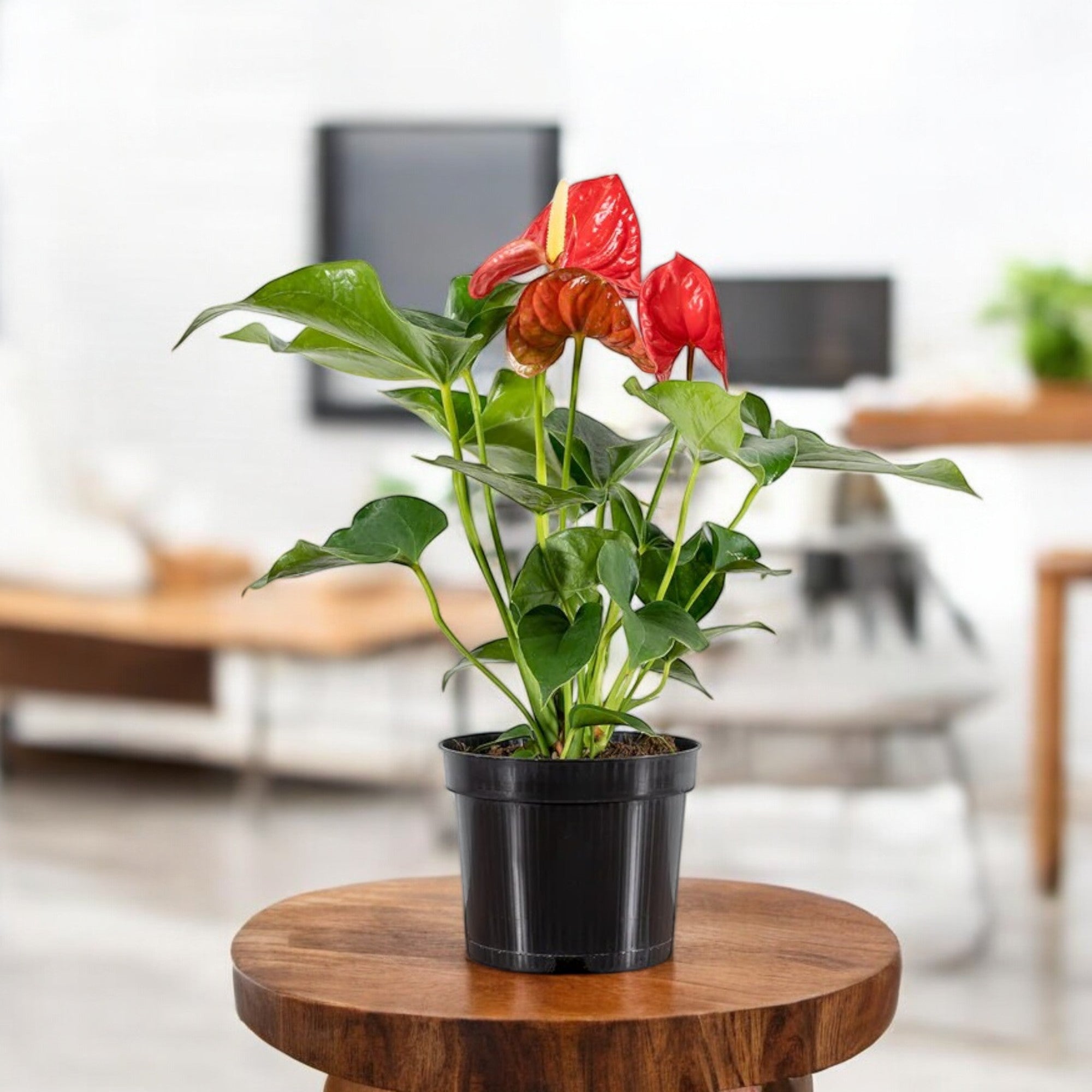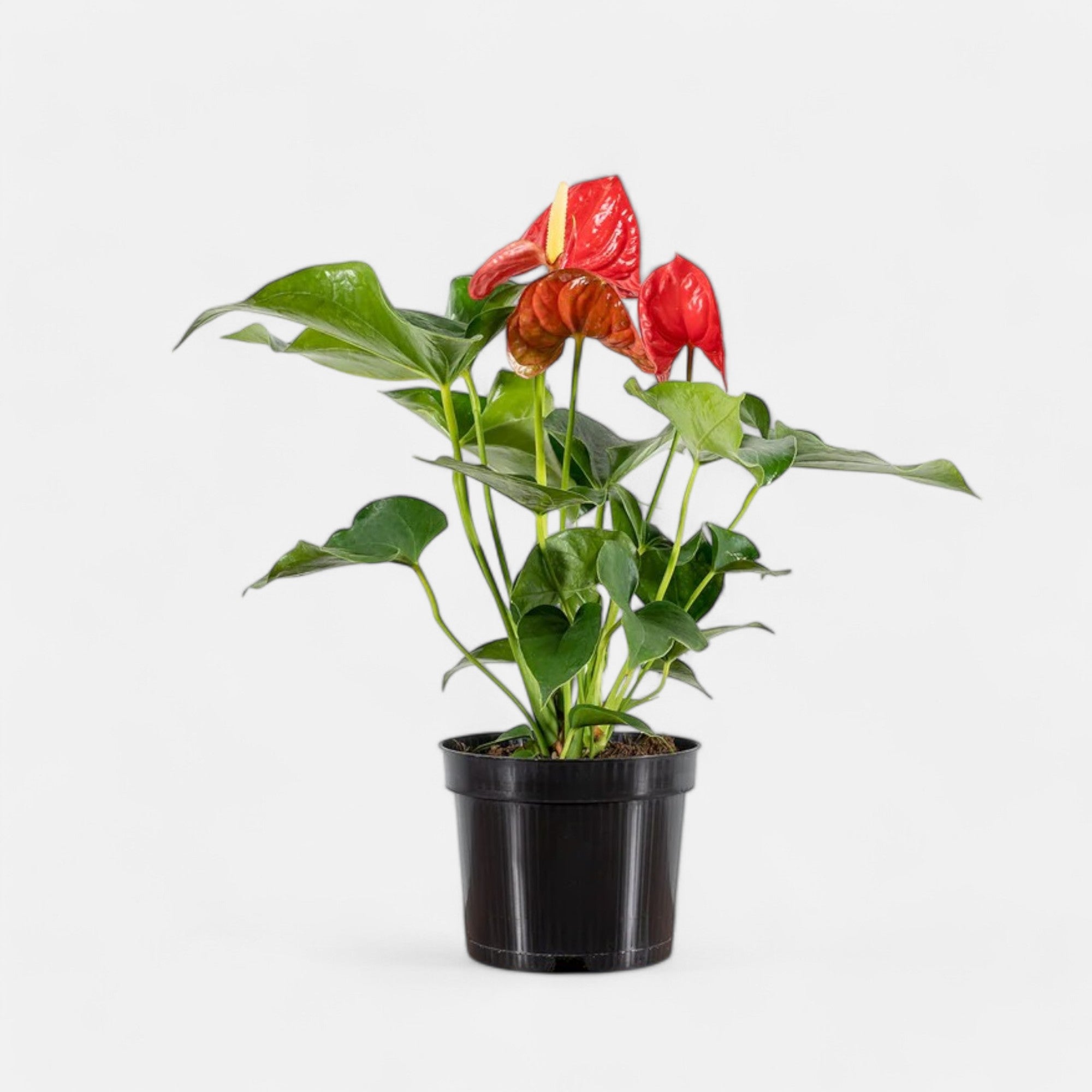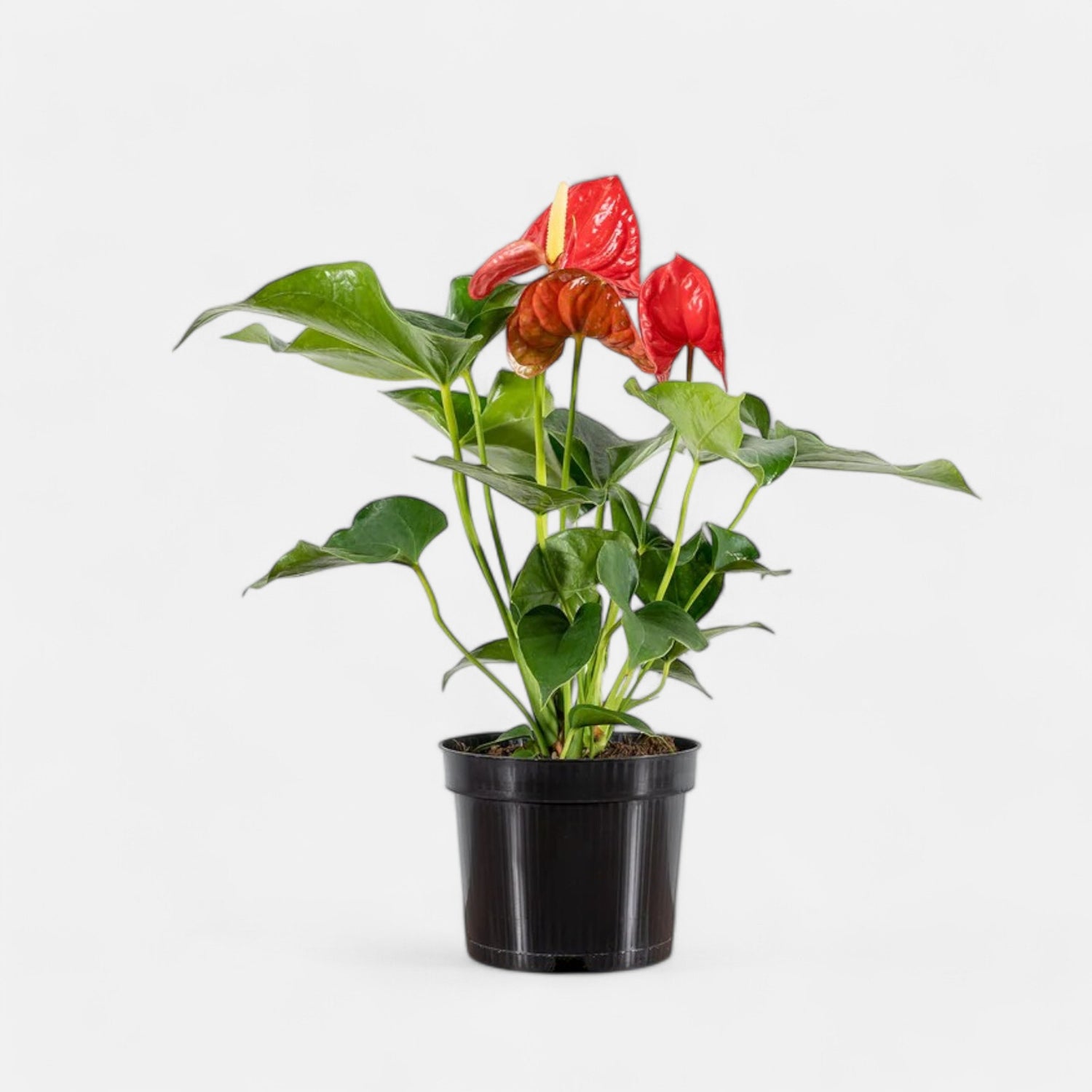

Brief Intro
Buy Anthurium Red Plant in Grow Pot
Elevate your indoor décor with the Anthurium Red Plant, known for its vibrant red blooms and glossy, heart-shaped leaves. Standing approximately 1 foot tall, this elegant plant comes in a sturdy 5-inch grow pot filled with enriched potting mix soil, ensuring optimal growth and long-lasting beauty.
About the Anthurium Plant (Red)
The Anthurium Red Plant is a symbol of elegance and sophistication, often chosen for its stunning, year-round blooms. Native to tropical regions, it thrives indoors and requires minimal care, making it a favorite among plant enthusiasts. The bold red spathes, often mistaken for flowers, surround a central spadix and create a striking contrast against the lush green foliage, adding a touch of luxury to any space.
Care Tips for Anthurium Red Plant
- Light: Thrives in bright, indirect light. Avoid direct sunlight, which may damage its leaves and blooms.
- Watering: Water moderately, keeping the soil moist but not waterlogged. Allow the top layer of soil to dry between waterings.
- Humidity: Prefers high humidity; occasional misting or placement near a humidifier is recommended.
- Temperature: Ideal temperature range is 18–24°C. Protect the plant from cold drafts and extreme temperatures.
- Fertilizer: Feed with a balanced, diluted liquid fertilizer every 6–8 weeks during the growing season.
- Repotting: Repot every 2–3 years or when roots outgrow the current pot.
Benefits of Anthurium Red Plant
- Aesthetic Beauty: Enhances any space with its vibrant red blooms and glossy green foliage.
- Air Purification: Improves indoor air quality by filtering toxins and increasing oxygen levels.
- Low Maintenance: Easy to care for, making it ideal for busy lifestyles or beginner plant owners.
- Year-Round Flowers: Provides continuous beauty throughout the year with its long-lasting blooms.
Placement Suggestions for Anthurium Red Plant
- Living Room: Adds a pop of color and elegance to coffee tables or side tables.
- Bedroom: Creates a soothing and aesthetically pleasing atmosphere.
- Office Desk: Brightens up workspaces and promotes a calming environment.
- Entryways and Hallways: Welcomes guests with its bold and attractive appearance.
FAQs:
What is the Return Policy?
This product is Not Returnable. It may be replaced or refunded in case of damage or defective condition on a case to case basis.
How to cancel my order?
Cancellation for Live Plants is allowed before the dispatched. You can request cancellation through Your Orders page or by contacting customer service within that time.
What if i received damage product?
If a product is received in a damaged or defective condition, you need to contact the customer service within 1 days of delivery. Free of cost replacement or refund claim is available to you.



